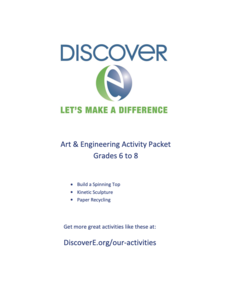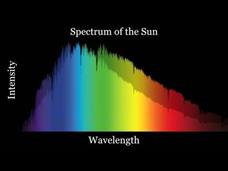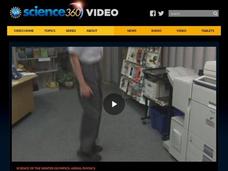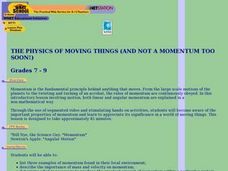Angular Momentum Teacher Resources
Find Angular Momentum lesson plans and worksheets
Showing 169 resources
Curated OER
Angular Momentum
In this momentum activity, students use linear momentum to determine velocity and angular momentum to determine angular velocity. This activity has 1 problem to solve.
Curated OER
Momentum
In this momentum instructional activity, students review impulses, angular momentum, and the law of conservation of momentum. This instructional activity has 30 fill in the blank statements.
Crash Course
Torque: Crash Course Physics #12
It's all about how you pull—not how hard! The 12th installment in a physics series explains the importance of the direction and angle of force when calculating torque. The narrator includes a discussion of the moment of inertia as...
Curated OER
Frisbee Physics
Young scholars explain how a Frisbee flies, why it's shaped he way it is and how fast and how far the Frisbee can go.
Rice University
College Physics for AP® Courses
Take a look at an organized physics course. The 34-section electronic textbook covers material in AP® Physics 1 and 2. Teachers use the text to supplement lectures and have the class work through the labs. Each section contains...
Curated OER
The Spin Doctor Is In
Pupils are introduced to rotational inertia with some example of objects that rotates: Throw a Frisbee acroos the field and it rotates as it moves. The same is true for a baseball and a football. The two motions, translational and...
University of California
Work, Energy, Power, Momentum
Planning a physics unit on energy can take a lot of work, luckily this instructional presentation is here to help. Covering everything from work and energy to elastic collisions and the conservation of momentum, this comprehensive...
Urbana School District
Projectile and Circular Motion, Torque
Introduce your young scholars to the concepts of circular motion, projectile motion, angular speed, simple harmonic motion, torque, center of mass, centripetal force, and Hooke's Law with a 86-slide presentation. The circular motion...
Veritasium
Bullet Block Experiment
Can energy be created? The textbook says no, but then how do you explain what is going on here? The Veritasium video demonstrates an experiment related to energy. Scholars watch the set up, come up with a hypothesis, watch the test, then...
DiscoverE
Art and Engineering Activity Packet: Grades 6-8
Build an appreciation of engineering. Pupils in grades 6-8 learn about science and engineering in a set of three engaging activities. They build spinning tops, construct wind structures, and create recycled paper as part of an engaging...
Veritasium
Spinning Black Holes
Why is the spin of a black hole important? Scholars explore spinning black holes and how they relate to momentum, matter, and mass. They investigate the different parameters that are used to measure black holes by understanding how...
Veritasium
Can We Really Touch Anything?
When we touch something, what actually happens? Young physicists get in depth with electrons in a video from Veritasium. The narrator first explains the intricate interactions that occur at the subatomic level before answering a variety...
Veritasium
Anti-Gravity Wheel?
What difference does rotation make when it comes to lifting a mass over your head? Sometimes, it makes all the difference! Young physicists observe this concept in a gravity-defying video by Veritasium. The resource shows the...
Veritasium
Why the Sky ISN'T Blue
The answer is: a method to celebrate a major milestone. A proud video celebrates 500,000 followers and gives an idea of how big that number is. The resource in the Veritasium playlist goes on to answer several questions posed by...
National Science Foundation
Aerial Physics—Science of the Winter Olympics
Take a leap into the science of motion! An intriguing lesson explains how Newton's third law of motion allows skiers to turn in mid-air. The narrator gives learners skills to practice on their own.
DiscoverE
Build a Spinning Top
There's no spin needed to describe the usefulness of a dizzying resource! Using paper plates, DVDs, wooden skewers, and pencils, learners work in teams to create spinning tops. The longest-spinning top wins.
Veritasium
The Truth About Toilet Swirl - Southern Hemisphere
Which way does your toilet water flow? A lesson in the Verisatium playlist explores the Coriolis Effect by examining the flow of water in both the Northern and Southern Hemispheres. The team designs an experiment to control for all...
Curated OER
Torque Play
In this physics instructional activity, students use torque to explain several very odd phenomena. They write the definition of torque and the relation between torque and change in angular momentum.
Curated OER
Ring Around the Rosie
Learners work together to discover the concept of angular momentum. They participate in experiments in which they test rotation and relate it to an object's mass. They participate in a literacy activity in which they compare mythology...
Veritasium
Gyroscopic Precession
Helicopters fly with the help of gyroscopic precession. An uplifting Vertasium video explains two common forces, momentum and torque. Demonstrations of both forces—along with scientific explanations—help develop an overall understanding...
Flipping Physics
AP Physics 1: Equations to Memorize
Saving the best for last, the final video in the series of 12 covers all of the equations young physicists should memorize because they are not on the equation sheet provided at the time of AP Physics 1 exam. This fast-paced video even...
Flipping Physics
AP Physics 1: Rotational Dynamics Review
Prepare your class members for the rotational dynamics section of the AP Physics exam with a fast-paced video that reviews all the key concepts and principles. Tips and tricks for the exam and common misconceptions are also addressed.
Socratica
Kepler's Second Law of Motion
Orbital velocity of planets change. Kepler's Second Law of Motion attempts to explain and predict the change in velocity. Scholars learn how to apply this law as they watch the video lesson.
Curated OER
THE PHYSICS OF MOVING THINGS (AND NOT A MOMENTUM TOO SOON!)
Students list three examples of momentum found in their local environment; describe the importance of mass and velocity on momentum; and determine what is necessary to produce the greatest amount of momentum within a particular system.

























